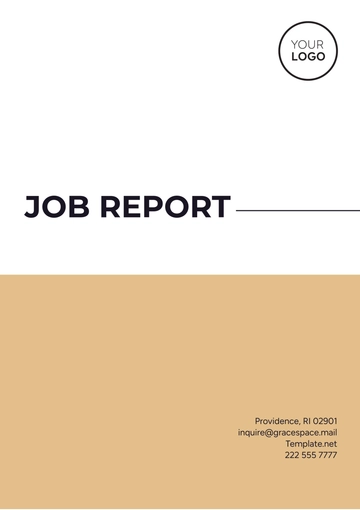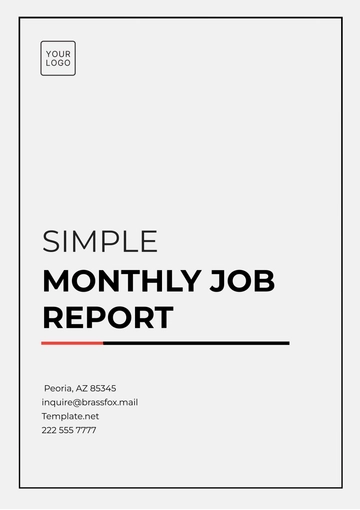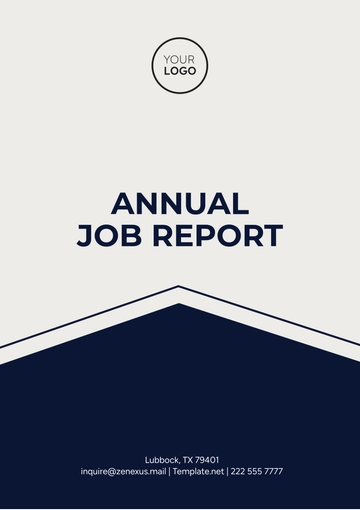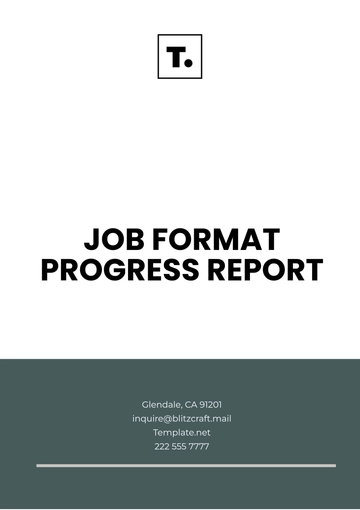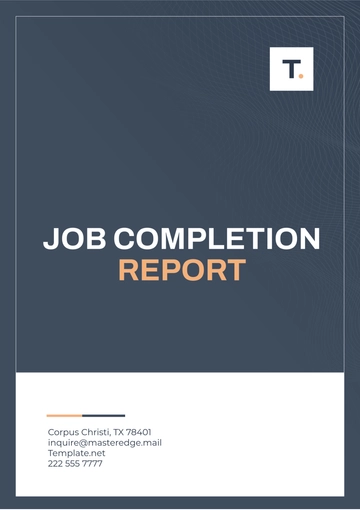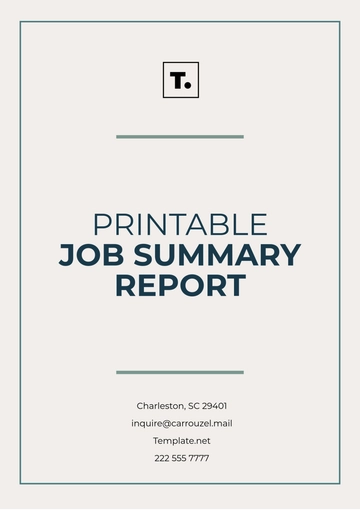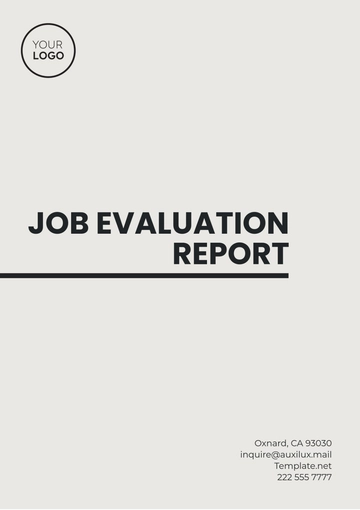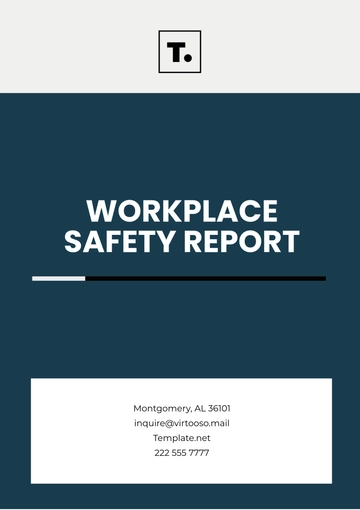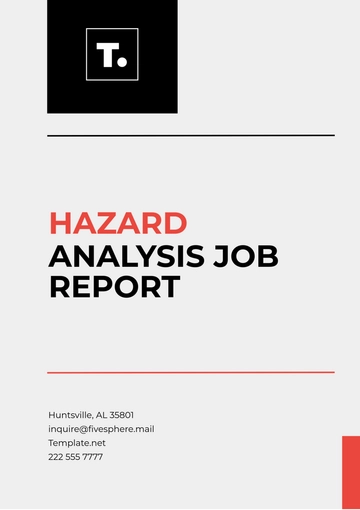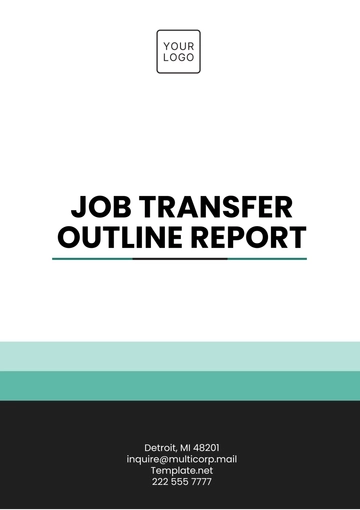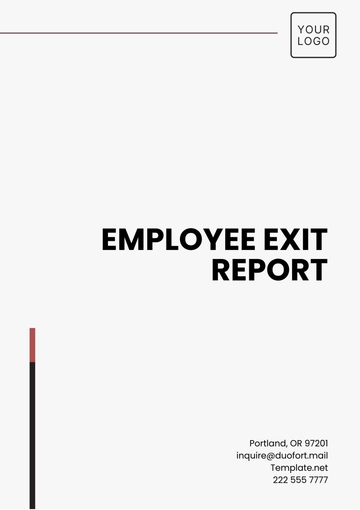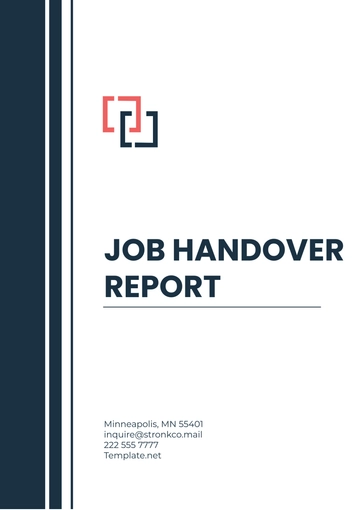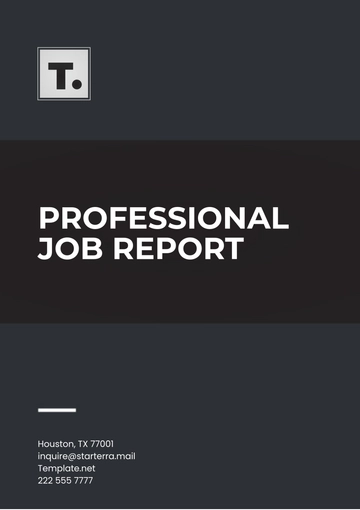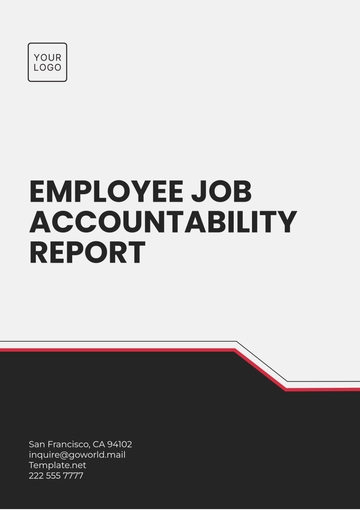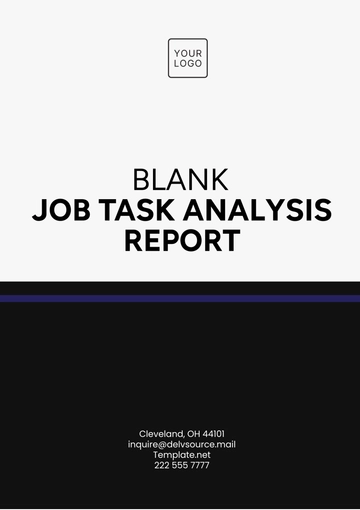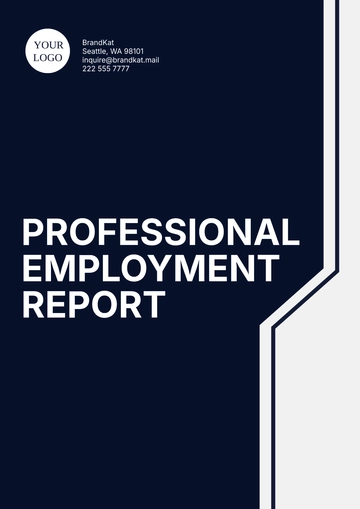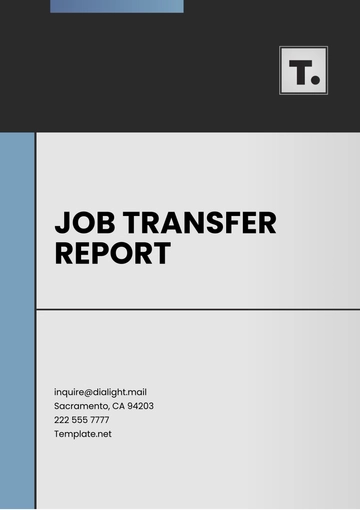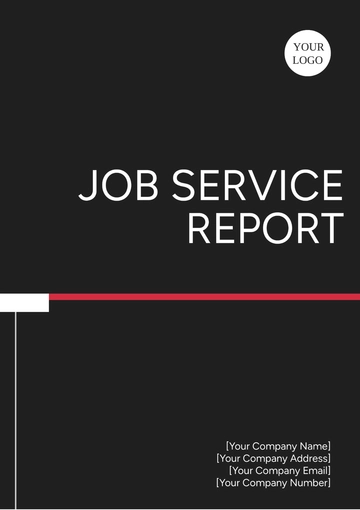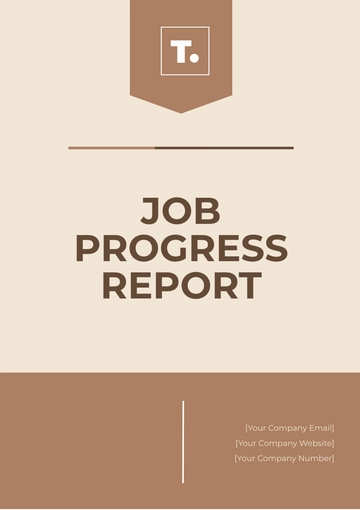Free Professional Employment Report
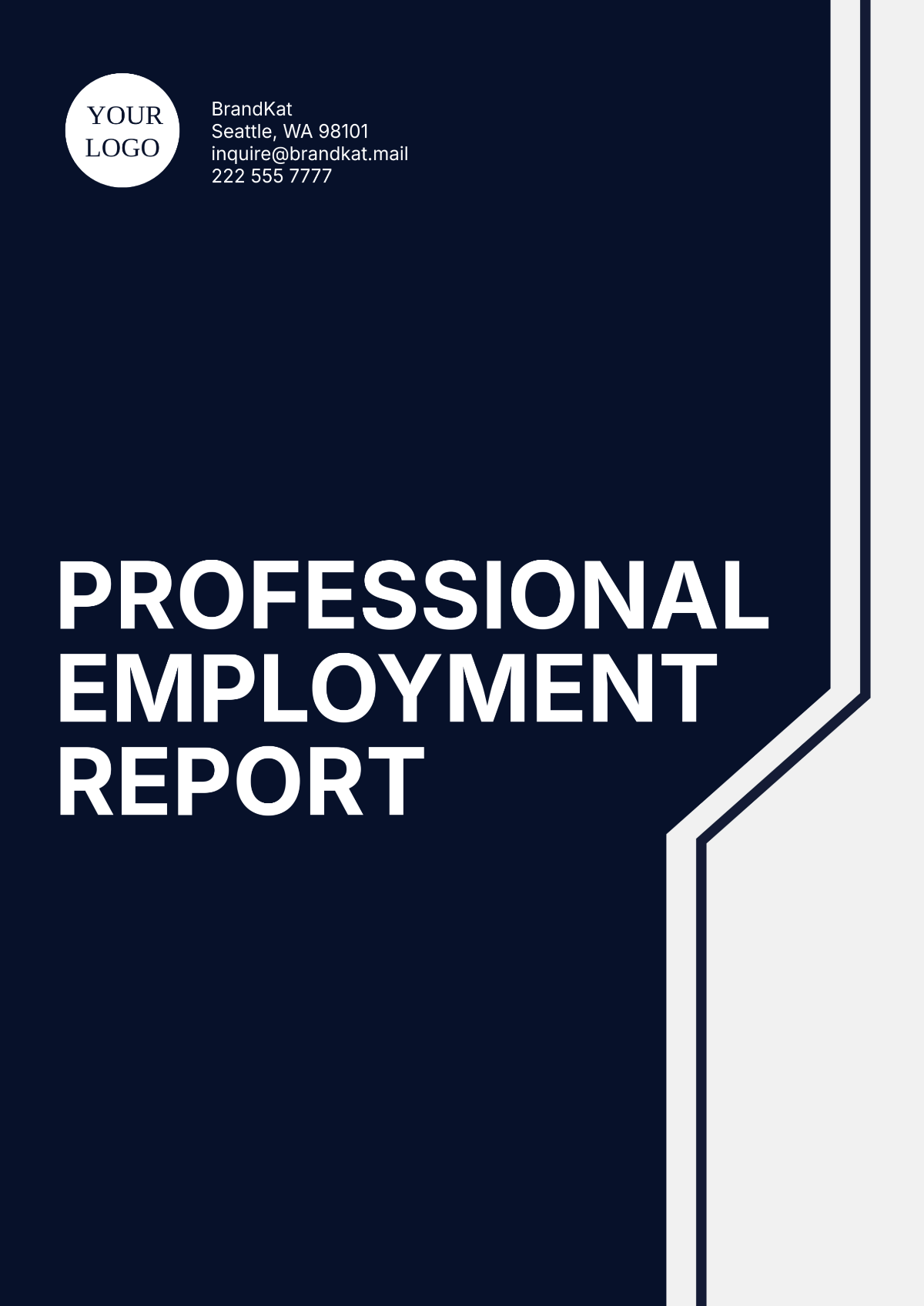
Executive Summary
This report provides a comprehensive analysis of professional employment trends, focusing on key factors influencing employment opportunities, workforce demographics, skill requirements, and emerging employment trends. The objective of this report is to provide an in-depth understanding of the current professional employment landscape, analyze key challenges and opportunities, and offer actionable recommendations for both employers and job seekers.
Employment Trends and Analysis
Overview of Professional Employment Trends
The professional employment sector has seen significant shifts over the past decade due to advancements in technology, changes in industry needs, and evolving workforce expectations. Below are key trends:
Remote and Hybrid Work Models: Increasing number of companies are adopting flexible work arrangements.
Technological Advancements: Automation and AI are reshaping job requirements.
Gig Economy Growth: Freelance and contract work are on the rise, especially in tech and creative sectors.
Employment Rate and Workforce Demographics
Key Employment Statistics
Employment Type | Percentage of Workforce | Growth Rate (Yearly) | Notes |
|---|---|---|---|
Full-time Employment | 60% | 2% | Steady increase in full-time positions |
Part-time Employment | 18% | 1% | Part-time jobs mainly in retail |
Freelance and Contract Work | 22% | 6% | Significant rise in tech and creative |
Age Distribution: The workforce is becoming younger with an increasing share of professionals under the age of 35.
Gender Representation: Gender balance is improving, but specific industries (tech, engineering) still show gender gaps.
Key Sectors Driving Employment Growth
The following sectors are contributing significantly to employment growth:
Technology and IT: Rapid digital transformation drives demand for tech professionals.
Healthcare: Aging populations and healthcare innovation increase the need for healthcare workers.
Green Energy: Sustainability efforts are creating new jobs in renewable energy.
Employment by Industry (Top 5 Sectors)
Industry | Employment Growth (%) | Key Positions in Demand |
|---|---|---|
Technology & IT | 10% | Software Developers, Cybersecurity Experts |
Healthcare | 7% | Nurses, Medical Technicians, Physicians |
Education | 3% | Teachers, Administrators |
Finance | 4% | Financial Analysts, Accountants |
Green Energy | 5% | Solar Panel Technicians, Environmental Engineers |
Skill Requirements and Future Workforce Needs
Skills in High Demand
As the job market evolves, employers are seeking candidates with specific skill sets. These include:
Technical Skills:
Software development (Python, Java)
Data analysis (SQL, R, Tableau)
Cybersecurity protocols
Soft Skills:
Communication and interpersonal skills
Adaptability and problem-solving
Leadership and teamwork
Table: Skill Demand by Industry
Industry | Key Skills Required |
|---|---|
Technology & IT | Coding, Cloud Computing, Machine Learning |
Healthcare | Patient Care, Medical Research, Healthcare IT |
Education | Teaching, Curriculum Design, Technology Integration |
Finance | Financial Modeling, Risk Management, Regulatory Compliance |
Green Energy | Environmental Science, Project Management, Renewable Energy Solutions |
Emerging Skills
Artificial Intelligence and Machine Learning: Proficiency in AI will be critical for most industries.
Blockchain: A growing demand in financial services and cybersecurity.
Sustainability and Environmental Management: Professionals who can drive eco-friendly practices are becoming more sought after.
Challenges in Professional Employment
Recruitment Challenges
Talent Shortage: Particularly in technology and healthcare, the demand for skilled professionals exceeds supply.
Retaining Top Talent: Companies face high turnover rates, especially in high-demand sectors.
Inclusion and Diversity: Many industries are still working toward more inclusive hiring practices.
Economic and Geopolitical Factors
Economic Uncertainty: Global financial instability, including inflation, can lead to hiring freezes and layoffs.
Global Talent Mobility: Increasing international competition for top talent, with remote work enabling hiring from global talent pools.
Geopolitical Instability: Regional conflicts may disrupt industries reliant on international supply chains.
Workforce Development and Training
Investment in Employee Skills
Organizations must focus on continuous learning and development to remain competitive. Strategies for skill enhancement include:
On-the-job Training: Practical, hands-on learning to bridge skill gaps.
Online Learning Platforms: Utilization of platforms like Coursera, Udemy, and LinkedIn Learning to provide employees with access to up-to-date knowledge.
Cross-disciplinary Training: Encouraging employees to learn skills outside their traditional roles, such as coding for non-technical staff.
Role of Government and Institutions
Educational Partnerships: Collaboration between educational institutions and industries to align curricula with market needs.
Subsidies and Incentives for Training: Governments should offer incentives to companies investing in workforce upskilling.
Recommendations
For Employers
Adopt Flexible Work Models: Offer remote or hybrid work options to attract top talent.
Focus on Skill Development: Invest in continuous learning programs and develop leadership pipelines.
Enhance Diversity and Inclusion: Build diverse teams and provide equal opportunities for all candidates.
For Job Seekers
Develop Digital Skills: Learn in-demand technical skills, particularly in AI, data science, and cybersecurity.
Focus on Lifelong Learning: Constantly upgrade knowledge to stay relevant in an evolving job market.
Adaptability: Be open to change and flexible in learning new job roles as industries shift.
Conclusion
The professional employment landscape continues to evolve due to technological, economic, and social factors. By understanding current trends, skill requirements, and the challenges ahead, employers and employees can make informed decisions to succeed in the dynamic job market. Continuous adaptation and investment in talent are key to staying competitive in an increasingly globalized and technologically driven world.
- 100% Customizable, free editor
- Access 1 Million+ Templates, photo’s & graphics
- Download or share as a template
- Click and replace photos, graphics, text, backgrounds
- Resize, crop, AI write & more
- Access advanced editor
The Professional Employment Report Template by Template.net is a fully editable and customizable tool designed to simplify your reporting needs. With the AI Editable Tool, users can effortlessly personalize sections to fit specific employment metrics. Streamline your workflow and ensure a polished, professional report every time—ideal for HR teams, managers, and business professionals.
You may also like
- Sales Report
- Daily Report
- Project Report
- Business Report
- Weekly Report
- Incident Report
- Annual Report
- Report Layout
- Report Design
- Progress Report
- Marketing Report
- Company Report
- Monthly Report
- Audit Report
- Status Report
- School Report
- Reports Hr
- Management Report
- Project Status Report
- Handover Report
- Health And Safety Report
- Restaurant Report
- Construction Report
- Research Report
- Evaluation Report
- Investigation Report
- Employee Report
- Advertising Report
- Weekly Status Report
- Project Management Report
- Finance Report
- Service Report
- Technical Report
- Meeting Report
- Quarterly Report
- Inspection Report
- Medical Report
- Test Report
- Summary Report
- Inventory Report
- Valuation Report
- Operations Report
- Payroll Report
- Training Report
- Job Report
- Case Report
- Performance Report
- Board Report
- Internal Audit Report
- Student Report
- Monthly Management Report
- Small Business Report
- Accident Report
- Call Center Report
- Activity Report
- IT and Software Report
- Internship Report
- Visit Report
- Product Report
- Book Report
- Property Report
- Recruitment Report
- University Report
- Event Report
- SEO Report
- Conference Report
- Narrative Report
- Nursing Home Report
- Preschool Report
- Call Report
- Customer Report
- Employee Incident Report
- Accomplishment Report
- Social Media Report
- Work From Home Report
- Security Report
- Damage Report
- Quality Report
- Internal Report
- Nurse Report
- Real Estate Report
- Hotel Report
- Equipment Report
- Credit Report
- Field Report
- Non Profit Report
- Maintenance Report
- News Report
- Survey Report
- Executive Report
- Law Firm Report
- Advertising Agency Report
- Interior Design Report
- Travel Agency Report
- Stock Report
- Salon Report
- Bug Report
- Workplace Report
- Action Report
- Investor Report
- Cleaning Services Report
- Consulting Report
- Freelancer Report
- Site Visit Report
- Trip Report
- Classroom Observation Report
- Vehicle Report
- Final Report
- Software Report
